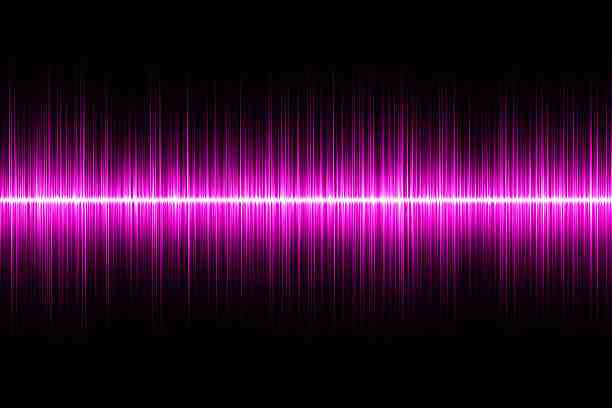Understanding White vs Pink vs Brown Noise

10 Unique Joints of the Body
November 21, 2023
Recent Advances in Alzheimer’s Disease and Treatments
January 15, 2024Understanding White vs. Pink vs. Brown Noise
Chambers Medical Group is one of the highest rated auto injury medical care facilities with locations in Florida and Kentucky. Dr. Deryk Harting, a patient favorite in the Tampa Bay area, discusses the differences between white, pink, and brown noise.
The concept of “noise colors” in audio sound engineering refers to ambient noises distinguished by their frequency and amplitude. These colors, including white, pink, and brown noise, play a significant role in creating ambient soundscapes. Each color represents a specific frequency distribution which influences the listening experience. While white, brown, and pink noise are some of the most known noise color types, others include blue, violet, green, grey, and black. The different names originated with white noise, mirroring the concept that white light has a flat power spectrum across the visible range. Similarly, white noise features equal power within any frequency interval.
Differences Between White, Pink, and Brown Noise:
White Noise:
- Encompasses all audible frequencies (20 Hz to 20,000 Hz) at equal volumes, creating a higher-pitched sound.
- Uses include masking unwanted sounds, promoting relaxation, aiding insomnia, and managing ADHD symptoms.
Pink Noise:
- Also contains all audible frequencies but higher frequencies are less powerful than lower frequencies, resulting in a softer, more balanced sound like those found in nature.
- Commonly used for background noise due to its pleasing and relaxing qualities.
- Examples include rain, wind, waterfall, ocean waves, rivers, and heartbeats.
Brown Noise:
- Emphasizes lower frequencies, producing a bass-heavy, rumbling sound that is deeper than white and pink noise.
- Known for sound-muffling properties, making it effective for focused work.
- Examples include driving noises, steady waterfall, heavy rainfall, thunder, and crashing waves.
Benefits in Different Scenarios:
- Sleep:
- Pink noise and white noise have shown promising results for improving sleep quality.
- White noise helps mask noisy environments especially when trying to induce and maintain sleep.
- Some research has shown pink noise may reduce the time it takes to fall asleep and achieve deep sleep.
- Anxiety:
- Natural sounds have been associated with reducing anxiety related to medical procedures.
- Due to its concentration-enhancing properties, brown noise may contribute to anxiety relief.
- ADHD:
- White noise has shown benefits for individuals with ADHD, enhancing memory performance in some cases.
- Pink noise, with its relaxing qualities, may aid concentration for individuals with lower attention levels.
The Healing Properties of Noise:
The pink noise spectrum has been the most popular and recognized spectrum for its therapeutic value. Scientists have also been exploring various other frequencies to address issues like insomnia, anxiety, and memory loss. Many people choose to apply the pink noise spectrum at bedtime, aiming to induce deeper sleep. This deeper sleep, in turn, facilitates brain restoration to optimize focus and concentration during waking hours. Deep sleep is crucial in memory creation and consolidation. The decline in restorative sleep with age is also a significant contributor to memory loss. Utilizing noise for advantageous purposes such as enhancing focus, improving sleep quality, uplifting mood, or boosting motivation is a promising field that continues to gain popularity.
Listening to Noise Colors:
Creating noise colors in day-to-day life can be very simple by using items like running a fan or electronic devices that produce static. Other options include standalone sound machines, mobile apps, or online platforms offering noise soundtracks such as YouTube. However, noise above 70 decibels can cause hearing damage with prolonged exposure. Keeping noise levels below 45 decibels is recommended to avoid adverse effects.
In summary, noise colors contribute to the creation of ambient noise in audio sound engineering. Each color, whether white, pink, or brown, offers unique characteristics with potential benefits in various scenarios that range from improving concentration and sleep to providing anxiety relief. Personal preference plays a crucial role in selecting the most suitable noise color for specific situations.
— This article is written by Deryk Harting, DC, one of the members of Chambers Medical Group’s team of car accident chiropractors who offer a variety of treatments and therapies ranging from diagnostic testing to various soft tissue therapies for car accidents and injuries in Florida.
–
.
–
Have you been in a car accident? If you or somebody you know has been in a car accident, be sure that you seek medical attention from a car accident doctor or car accident chiropractor to treat your injuries. Visit Chambers Medical Group to receive world-class medical treatment for your injuries.
Chambers Medical Group has car accident medical clinics in the following locations:
- Car Accident Medical Clinic in Tampa
- Car Accident Medical Clinic in Plant City
- Car Accident Medical Clinic in Brandon
- Car Accident Medical Clinic in Lakeland
- Car Accident Medical Clinic in Sarasota
- Car Accident Medical Clinic in Louisville
- Car Accident Medical Clinic in Lexington
- Car Accident Medical Clinic in Florence




